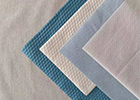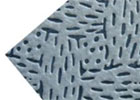Sourcing Nonwoven Fabric Solutions: Cleanroom Cleaning Excellence
|
Nonwoven Fabric Solutions for Cleanroom Cleaning Quality Standards for Nonwoven Fabric Solutions Best Practices for Cleanroom Cleaning with Nonwoven Fabric Solutions |
Introduction
Cleanroom cleaning plays a crucial role in the sourcing of nonwoven fabrics. It ensures that the fabrics meet the required standards of cleanliness and quality. However, cleanroom cleaning can present challenges that need to be understood and addressed to ensure the effectiveness of the process.
Importance of cleanroom cleaning in nonwoven fabric sourcing
Cleanroom cleaning is essential in nonwoven fabric sourcing for several reasons:
• Maintaining product quality: Nonwoven fabrics are used in various industries, including healthcare, automotive, and filtration. These industries have strict quality standards, and any contamination in the fabric can affect the performance and safety of the end products. Cleanroom cleaning helps to remove potential contaminants and maintain the integrity of the fabrics.
• Meeting regulatory requirements: Many industries have regulations and guidelines regarding cleanliness and hygiene. Cleanroom cleaning ensures compliance with these requirements and prevents any legal or regulatory issues that may arise from using non-compliant fabrics.
• Preventing cross-contamination: Cleanroom cleaning prevents cross-contamination between batches of nonwoven fabrics. This is particularly important when different fabrics are manufactured in the same cleanroom facility. Contamination from one batch can affect the quality of subsequent batches, leading to product defects and financial losses.
• Ensuring customer satisfaction: Cleanroom cleaning gives customers confidence in the quality of the nonwoven fabrics they are purchasing. Clean and uncontaminated fabrics are more likely to meet customer expectations and result in higher levels of satisfaction.
Understanding the challenges in cleanroom cleaning
Cleanroom cleaning can be challenging due to the following factors:
• Strict cleanliness standards: Cleanrooms have stringent cleanliness standards, and even minor deviations can lead to non-compliance. This requires dedicated and precise cleaning techniques, equipment, and trained personnel.
• Contamination control: Cleanroom cleaning involves controlling contamination sources, such as human operators, equipment, and materials. Ensuring that these sources are properly managed and cleaned is crucial to maintaining the cleanliness of the cleanroom environment.
• Complex cleaning procedures: Cleanroom cleaning involves multiple steps and procedures, including surface cleaning, disinfection, and monitoring. Each step must be followed meticulously to ensure effective cleaning and prevent any potential contamination.
• Risk of damage to fabrics: Nonwoven fabrics can be delicate and susceptible to damage during the cleaning process. It is important to use gentle cleaning methods and suitable cleaning agents to avoid any adverse effects on the fabric's structure and integrity.
In conclusion, cleanroom cleaning is essential in the sourcing of nonwoven fabrics to maintain product quality, meet regulatory requirements, prevent cross-contamination, and ensure customer satisfaction. However, it is important to understand and address the challenges associated with cleanroom cleaning to ensure its effectiveness and the integrity of the fabrics.
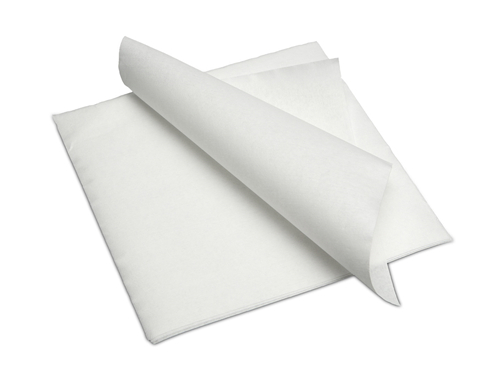
Nonwoven Fabric Solutions for Cleanroom Cleaning
Types of nonwoven fabrics suitable for cleanroom cleaning
Nonwoven fabrics are commonly used in cleanroom cleaning due to their unique properties. Here are some types of nonwoven fabrics that are suitable for cleanroom cleaning:
• Polyester nonwoven fabrics: These fabrics are highly resistant to chemicals and abrasion, making them ideal for cleanroom cleaning where harsh cleaning agents may be used.
• Microfiber nonwoven fabrics: Microfiber fabrics are known for their excellent absorbency and trapping capabilities, making them effective in picking up and removing particles and contaminants from cleanroom surfaces.
• Spunbond nonwoven fabrics: Spunbond fabrics are durable and have a low linting property, making them suitable for cleanroom cleaning where the release of particles into the environment needs to be minimized.
Benefits of using nonwoven fabric solutions
Using nonwoven fabric solutions for cleanroom cleaning offers several benefits:
• Enhanced cleaning efficiency: Nonwoven fabrics have a high surface area and can effectively trap and remove particles and contaminants from cleanroom surfaces. This leads to more efficient cleaning and a cleaner environment.
• Reduced cross-contamination risk: Nonwoven fabrics can be easily disposed of after use, reducing the risk of cross-contamination between different parts of the cleanroom or between different cleanrooms altogether.
• Compatibility with cleaning agents: Nonwoven fabrics are compatible with a wide range of cleaning agents, allowing for the use of specific chemicals that may be required for certain cleanroom applications.
• Cost-effective: Nonwoven fabrics are often more cost-effective compared to other cleaning materials, such as wipes or mops. They can be produced in large quantities at a relatively low cost, making them a practical choice for cleanroom cleaning.
In conclusion, the use of nonwoven fabric solutions in cleanroom cleaning offers various advantages, including enhanced cleaning efficiency, reduced risk of cross-contamination, compatibility with cleaning agents, and cost-effectiveness. Understanding the different types of nonwoven fabrics suitable for cleanroom cleaning can help in selecting the most appropriate solution for specific cleanroom requirements.

Nonwoven Fabric Wipes
Different types of nonwoven fabric wipes available
Nonwoven fabric wipes are a popular choice for cleanroom cleaning due to their unique properties and effectiveness in removing particles and contaminants. Here are some types of nonwoven fabric wipes that are commonly used in cleanroom environments:
• Polyester nonwoven fabric wipes: These wipes are highly resistant to chemicals and abrasion, making them suitable for use in cleanrooms where harsh cleaning agents may be required. They provide excellent cleaning performance and durability.
• Microfiber nonwoven fabric wipes: Microfiber wipes are known for their exceptional absorbency and trapping capabilities. They effectively pick up and remove particles and contaminants from cleanroom surfaces, leaving them clean and free of residue.
• Spunbond nonwoven fabric wipes: Spunbond wipes are durable and have a low linting property, making them ideal for cleanroom cleaning where the release of particles into the environment needs to be minimized. They provide effective and efficient cleaning results.
Advantages of using nonwoven fabric wipes for cleanroom cleaning
Using nonwoven fabric wipes for cleanroom cleaning offers several advantages over other cleaning materials:
• Enhanced cleaning efficiency: Nonwoven fabric wipes have a high surface area, allowing them to effectively trap and remove particles and contaminants from cleanroom surfaces. This leads to more efficient cleaning and a cleaner environment.
• Reduced risk of cross-contamination: Nonwoven fabric wipes can be disposed of after use, reducing the risk of cross-contamination between different parts of the cleanroom or between different cleanrooms altogether. This helps maintain the integrity of the cleanroom environment.
• Compatibility with cleaning agents: Nonwoven fabric wipes are compatible with a wide range of cleaning agents, allowing for the use of specific chemicals that may be required for certain cleanroom applications. This ensures effective cleaning tailored to the specific needs of the cleanroom.
• Cost-effective: Nonwoven fabric wipes are often more cost-effective compared to other cleaning materials, such as wipes or mops. They can be produced in large quantities at a relatively low cost, making them a practical choice for cleanroom cleaning.
Using nonwoven fabric wipes in cleanroom cleaning offers various advantages, including enhanced cleaning efficiency, reduced risk of cross-contamination, compatibility with cleaning agents, and cost-effectiveness. Understanding the different types of nonwoven fabric wipes available can help in selecting the most appropriate solution for specific cleanroom requirements.
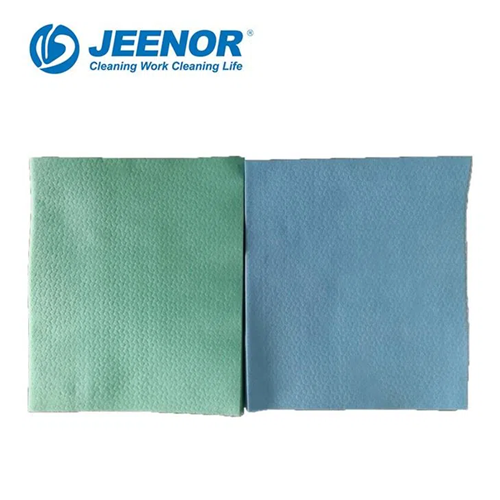
Cleanroom Mops
Varieties of cleanroom mops made from nonwoven fabric
Cleanroom mops made from nonwoven fabric are available in a variety of options to meet the specific cleaning requirements of cleanroom environments. Here are some types of nonwoven fabric mops commonly used in cleanrooms:
• Polyester nonwoven fabric mops: These mops are highly durable and resistant to abrasion, making them suitable for rigorous cleaning tasks in cleanrooms. They effectively remove particles and contaminants from surfaces without leaving any residue.
• Microfiber nonwoven fabric mops: Microfiber mops are known for their exceptional absorbency and trapping capabilities. They can effectively pick up and retain particles and contaminants, leaving cleanroom surfaces clean and free of debris.
• Spunbond nonwoven fabric mops: These mops have a low linting property and provide excellent cleaning performance in cleanrooms. They are durable and can effectively remove particles and contaminants without introducing additional lint into the environment.
Benefits of using nonwoven fabric mops in cleanroom environments
Using nonwoven fabric mops for cleanroom cleaning offers several advantages over other mop materials:
• Enhanced cleaning efficiency: Nonwoven fabric mops have a high surface area, allowing them to effectively pick up and trap particles and contaminants from cleanroom surfaces. This leads to more efficient cleaning and a cleaner environment.
• Reduced risk of cross-contamination: Nonwoven fabric mops can be disposed of after use, minimizing the risk of cross-contamination between different areas of the cleanroom or different cleanrooms altogether. This helps maintain the integrity of the cleanroom environment.
• Compatibility with cleaning agents: Nonwoven fabric mops are compatible with a wide range of cleaning agents, allowing for customized cleaning based on the specific needs of the cleanroom. They can be used with appropriate chemicals to achieve optimal cleaning results.
• Cost-effective: Nonwoven fabric mops are often more cost-effective compared to other mop materials. They can be produced in large quantities at a relatively low cost, making them a practical choice for cleanroom cleaning.
Using nonwoven fabric mops in cleanroom environments provides enhanced cleaning efficiency, reduced risk of cross-contamination, compatibility with cleaning agents, and cost-effectiveness. By considering the varieties of nonwoven fabric mops available, cleanroom operators can select the most suitable option to meet their specific cleaning needs.
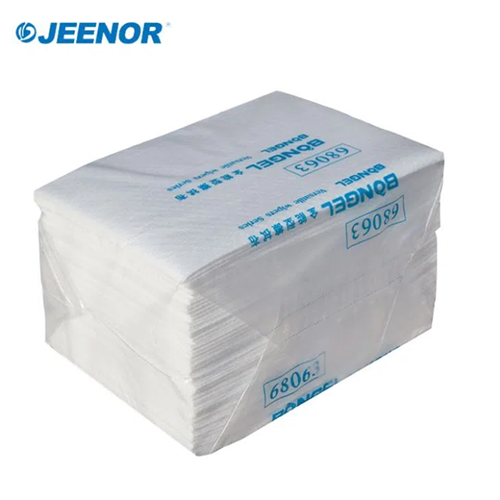
Cleanroom Swabs
Applications and advantages of nonwoven fabric swabs in cleanroom cleaning
Nonwoven fabric swabs are a popular choice for cleanroom cleaning due to their various applications and advantages. Here are some key points to consider:
• Cleaning surfaces: Nonwoven fabric swabs can effectively clean surfaces in cleanroom environments, removing particles and contaminants without leaving behind any residue. They are highly absorbent and can trap dirt and debris effectively.
• Applying cleaning agents: Nonwoven fabric swabs are compatible with a variety of cleaning agents, allowing for customized cleaning based on the specific needs of the cleanroom. This versatility makes them suitable for different cleaning applications.
• Electronics cleaning: Nonwoven fabric swabs are commonly used for cleaning delicate electronic components in cleanrooms. They are gentle on sensitive surfaces and can effectively remove static charges, dust, and other contaminants that can impact electronic performance.
• Optics cleaning: Nonwoven fabric swabs are also widely used for cleaning optics and lenses in cleanroom environments. The lint-free properties of nonwoven fabric prevent lint or fibers from being left behind on the surfaces, ensuring optimal clarity and performance.
Types of nonwoven fabric swabs available for different cleaning needs
There are various types of nonwoven fabric swabs available for different cleaning needs. Here are some common options:
• Polyester nonwoven fabric swabs: These swabs are highly absorbent and durable, making them suitable for rigorous cleaning tasks. They can effectively remove contaminants and maintain a clean environment.
• Microfiber nonwoven fabric swabs: Microfiber swabs are known for their exceptional trapping capabilities and can effectively clean surfaces without leaving any residue or lint behind.
• Spunbond nonwoven fabric swabs: These swabs have low linting properties and are ideal for sensitive cleaning applications. They provide excellent cleaning performance without introducing additional lint or fibers into the cleanroom environment.
It is important for cleanroom operators to select the appropriate type of nonwoven fabric swab based on the specific cleaning needs of their cleanroom. By using nonwoven fabric swabs, cleanroom environments can benefit from efficient and effective cleaning that helps maintain cleanliness and integrity.
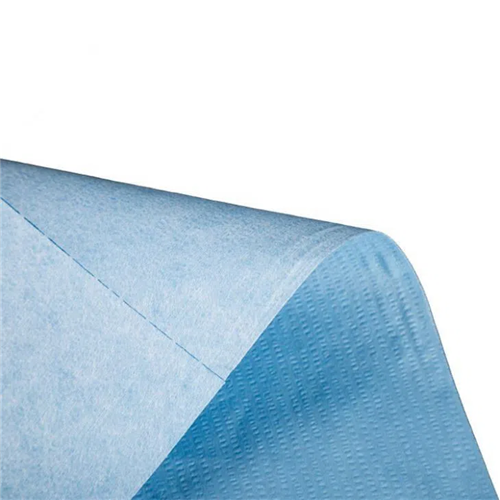
Cleanroom Garments
Nonwoven fabric solutions for cleanroom garments
Nonwoven fabric garments are commonly used in cleanroom environments due to their unique features and benefits. Here are some key points to understand:
• Lint-free and particle-free: Nonwoven fabric garments are designed to minimize lint and particle generation, ensuring a clean and uncontaminated working environment. This is crucial in industries such as pharmaceuticals, electronics, and medical devices manufacturing, where even the slightest contamination can have severe consequences.
• High breathability: Nonwoven fabric garments are breathable, allowing for better airflow and increased comfort for the wearer. This is especially important in cleanroom settings where individuals may need to wear these garments for extended periods.
• Chemical resistance: Nonwoven fabric garments are resistant to a wide range of chemicals and solvents commonly used in cleanroom environments. This provides protection for the wearer and prevents any harmful interactions between the garments and the cleaning agents or chemicals being used.
• Durable and long-lasting: Nonwoven fabric garments are known for their durability and resilience. They can withstand rigorous usage and repeated laundering without compromising their functionality. This makes them cost-effective in the long run as they can be reused multiple times before replacement.
Features and benefits of using nonwoven fabric garments in cleanroom environments
Here are some specific features and benefits of using nonwoven fabric garments in cleanroom environments:
| Features | Benefits |
| Low particulate generation | Reduces the risk of contamination and improves the overall cleanliness of the cleanroom |
| Comfortable to wear | Increases worker productivity by ensuring comfort during long working hours |
| Anti-static properties | Prevents the buildup of static charges, protecting sensitive electronic components and devices |
| Breathable and moisture-wicking | Helps maintain a comfortable working environment by allowing sweat and moisture to evaporate |
| Easy to clean and sanitize | Allows for efficient and effective decontamination of the garments to maintain strict cleanliness standards |
Overall, nonwoven fabric garments offer a reliable solution for maintaining cleanliness in cleanroom environments. Their unique features and benefits make them an essential component in industries where contamination control is critical.
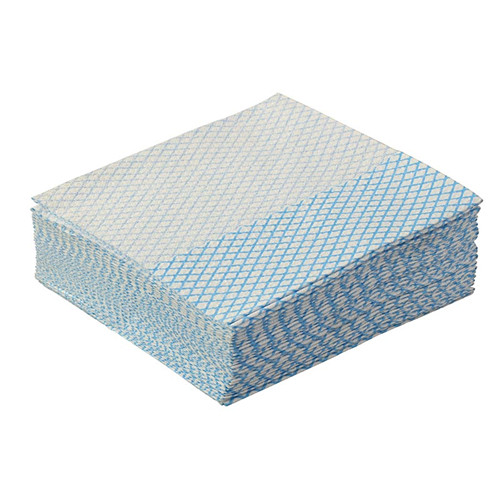
Quality Standards for Nonwoven Fabric Solutions
Understanding the importance of quality standards for cleanroom cleaning
When it comes to cleanrooms, maintaining a high level of cleanliness is of utmost importance. Nonwoven fabric garments play a crucial role in ensuring that the cleanroom environment remains uncontaminated. To meet the stringent requirements of cleanroom cleaning, it is essential to adhere to specific quality standards. Here are some key points to understand:
• Performance requirements: Nonwoven fabric garments must meet certain performance requirements to effectively control lint, particles, and other contaminants in the cleanroom. This ensures minimal risk of contamination and improves the overall cleanliness of the working environment.
• Material specifications: The material used in nonwoven fabric garments must be carefully selected to provide the desired characteristics, such as chemical resistance, breathability, and durability. This ensures optimal performance and longevity of the garments in cleanroom environments.
• Manufacturing processes: The manufacturing processes involved in producing nonwoven fabric garments must follow strict guidelines to maintain quality and consistency. This includes controls for particle generation, proper handling of materials, and adherence to hygiene practices.
Common quality certifications for nonwoven fabrics
To demonstrate compliance with quality standards, nonwoven fabric manufacturers may obtain various certifications. These certifications serve as indicators of their commitment to producing high-quality garments for cleanroom environments. Some common quality certifications include:
| Certification | Description |
| ISO 9001 | Ensures that the nonwoven fabric manufacturer follows a quality management system to consistently provide products that meet customer requirements. |
| ISO 13485 | Specifically for manufacturers of medical devices, this certification demonstrates compliance with quality management systems for the design and manufacture of medical devices. |
| EN 13795 | For surgical drapes, gowns, and clean air suits, this certification ensures conformity to performance requirements and materials used in healthcare settings. |
By selecting nonwoven fabric garments that have obtained these certifications, cleanroom operators can have confidence in the integrity and performance of the garments. This ultimately contributes to a cleaner and safer working environment for employees in industries that require stringent contamination control.

Best Practices for Cleanroom Cleaning with Nonwoven Fabric Solutions
Proper procedures and techniques for cleanroom cleaning using nonwoven fabric products
When it comes to cleanroom cleaning, using nonwoven fabric solutions can greatly help in maintaining a high level of cleanliness. Here are some best practices for cleanroom cleaning using nonwoven fabric products:
• Proper garment selection: It is important to choose nonwoven fabric garments that meet the specific performance requirements of the cleanroom. This includes considering factors such as lint control, particle filtration, and barrier properties. By selecting the right garments, the risk of contamination can be minimized.
• Appropriate cleaning techniques: Nonwoven fabric garments should be cleaned using gentle and non-abrasive techniques. This ensures that the integrity and effectiveness of the garments are maintained. It is advisable to follow the manufacturer's instructions for cleaning and care.
• Frequent garment change: Regularly changing nonwoven fabric garments is crucial in preventing the buildup of contaminants. It is recommended to have a schedule for garment change based on the specific requirements of the cleanroom environment.
• Proper storage: When not in use, nonwoven fabric garments should be stored in a clean and controlled environment. This helps to prevent contamination and ensures that the garments are ready for use when needed.
Tips for maintaining cleanliness and hygiene in cleanroom environments
In addition to using nonwoven fabric solutions for cleanroom cleaning, here are some tips to maintain cleanliness and hygiene in cleanroom environments:
• Regular cleaning and disinfection: Implement a regular cleaning and disinfection schedule to minimize the presence of contaminants. This includes cleaning surfaces, equipment, and tools used in the cleanroom.
• Strict adherence to cleanroom protocols: Ensure that all personnel working in the cleanroom follow strict protocols and procedures. This includes wearing appropriate protective clothing, maintaining personal hygiene, and practicing proper aseptic techniques.
• Proper waste disposal: Dispose of waste properly and promptly in designated containers. This helps to prevent the spread of contaminants and ensures a clean working environment.
• Regular monitoring and testing: Conduct regular monitoring and testing of the cleanroom environment to ensure compliance with cleanliness standards. This includes air quality testing and surface contamination monitoring.
By following these best practices and tips, cleanroom operators can maintain a clean and hygienic environment, minimizing the risk of contamination and ensuring the safety of employees and products in cleanroom settings.

Conclusion
Advantages of sourcing nonwoven fabric solutions for cleanroom cleaning
Using nonwoven fabric solutions for cleanroom cleaning offers several advantages, including:
• Enhanced cleanliness: Nonwoven fabrics are designed to have high levels of cleanliness, with excellent lint control and particle filtration properties.
• Superior barrier protection: Nonwoven fabrics provide a barrier against contaminants, helping to prevent their entry into the cleanroom environment.
• Cost-effectiveness: Nonwoven fabric solutions often offer a cost-effective option for cleanroom cleaning, as they can be disposable or easily cleaned and reused.
• Versatility: Nonwoven fabrics can be used for different cleanroom applications, such as garments, wipes, and mop heads, providing a versatile solution for various cleaning needs.
Importance of choosing the right nonwoven fabric products for optimal cleanroom performance
Selecting the right nonwoven fabric products is crucial for achieving optimal cleanroom performance. Factors to consider include:
• Performance requirements: Nonwoven fabric products should meet the specific performance requirements of the cleanroom, such as filtration efficiency and barrier properties.
• Compatibility: The chosen nonwoven fabric products should be compatible with the cleanroom environment and not introduce additional contaminants.
• Durability: Nonwoven fabric products should be durable and able to withstand cleaning processes without compromising their integrity and effectiveness.
• Regulatory compliance: Choosing nonwoven fabric products that comply with relevant industry standards and regulations ensures that the cleanroom operates within required guidelines.
By considering these factors and selecting the right nonwoven fabric products, cleanroom operators can achieve optimal cleanliness and performance in their cleanroom environments.




